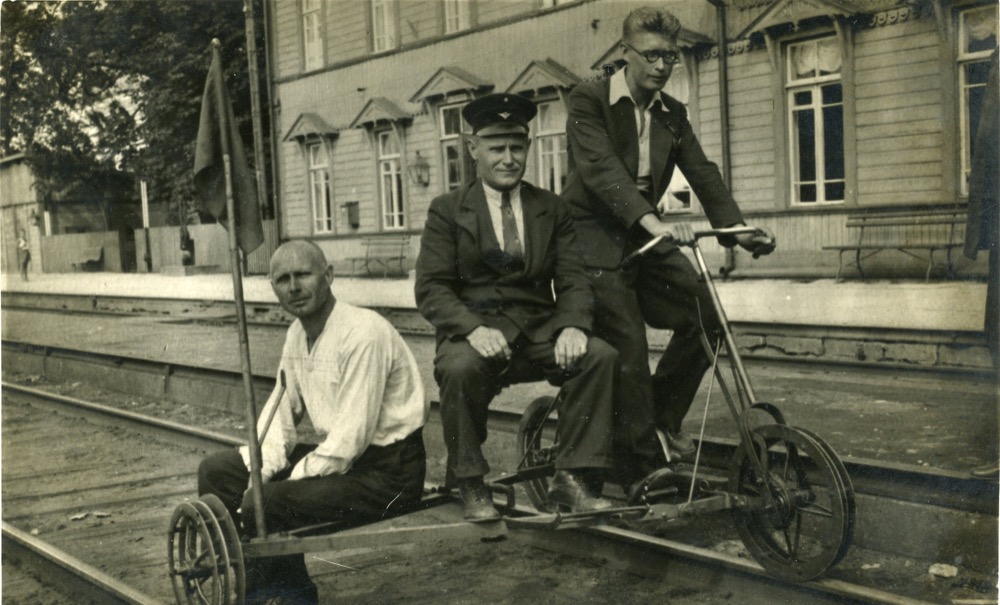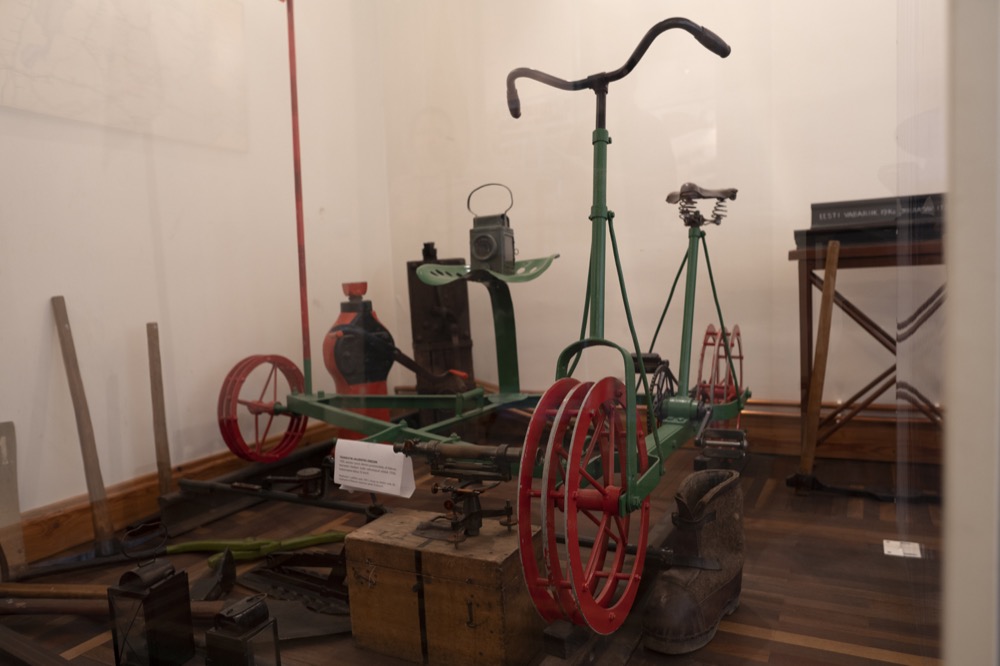
Along the rails with one’s legs and feet
Estonian railway workers have built their own motor trolleys as well as various hand- and feet-powered trolleys for their own use. The bicycle-trolley, designed by the roadmaster Herbert Juske from Rakvere in 1930, became a prototype for the bicycle-trolley also for other roadmasters of the 1930s. In his vehicle, Juske had used everything in his hands – from the spinning reel details to the handle of the iron. In a trolley that cost of about 180 kroons, even the seat of an old harvester found its application. With such a trolley that could be dismounted and moved on the rails unauthorized, it was possible to reach speeds of up to 35 km/h. When at the end of 1931 the rail network in Estonia was supplemented with 183 km of new railways, 10 roadmaster areas were abolished on the old roads in order to reassign roadmasters to work on new roads. The existing areas were prolonged and the roadmasters’ workload increased. Already in the spring of 1932, in order to facilitate the necessary supervision on the roads, the railway government provided 25 roadmasters with the bicycle-trolleys for the narrow-gauge and broad-gauge lines, which, after the example of Juske’s trolley, had been completed in the industrial schools of Tallinn and Valga, as well as in a private workshop in Rakvere. The bicycle-trolleys were still in use in the Soviet period.

